By Ed Hagen, volunteer gallery assistant and guest blogger at the Birthplace of Country Music Museum.
The Birthplace of Country Music Museum in Bristol, Virginia celebrates Bristol’s rich musical heritage surrounding the 1927 Bristol Sessions, a series of recordings that launched the careers of the Carter Family and Jimmie Rodgers. With April being “International Guitar Month”, this two part blog post will take a deep dive into the guitars of these famous musicians and stories surrounding these instruments.
The first Carter guitar
Maybelle Carter is remembered today as one of the most influential country guitar players of all time. Maybelle learned to play guitar on a Stella guitar. “Stella” is one of many brand names used by the Oscar Schmidt guitar company, a major manufacturer of budget guitars in the 1920s, often sold by catalog or door-to-door and were cheap and affordable instruments. Maybelle’s brother had purchased the guitar when Maybelle was thirteen. She was still playing the Stella five years later when the then unknown Carter Family made their first records at the Bristol sessions.
We don’t know much about that guitar. The pictures we have of it are quite grainy (we only know for sure that it was a Stella because Maybelle, in interviews years later, identified it as such).
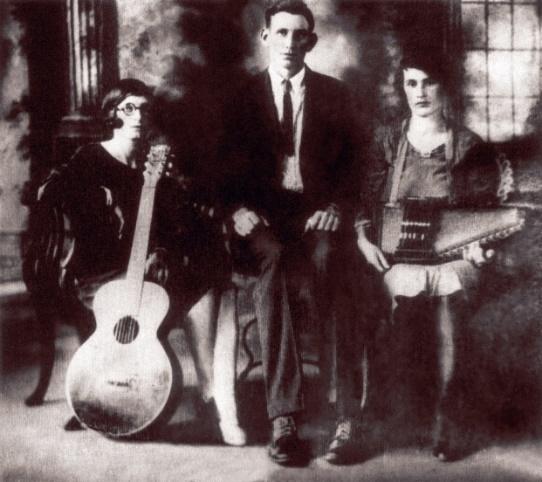
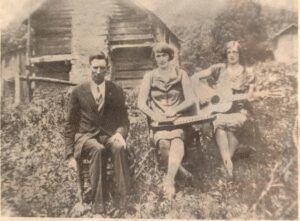
Two photos of the original Carter family showing Maybelle’s Stella guitar.
Maybelle’s L-5
Shortly after the Bristol sessions, with record royalties coming in and show bookings picking up, Maybelle’s husband Eck bought her a customized 1928 Gibson L-5 guitar. Carter family reminisces and Internet sleuthing indicate that the guitar was ordered at Lamb Music, then a Gibson affiliate, in Kingsport, Tennessee.
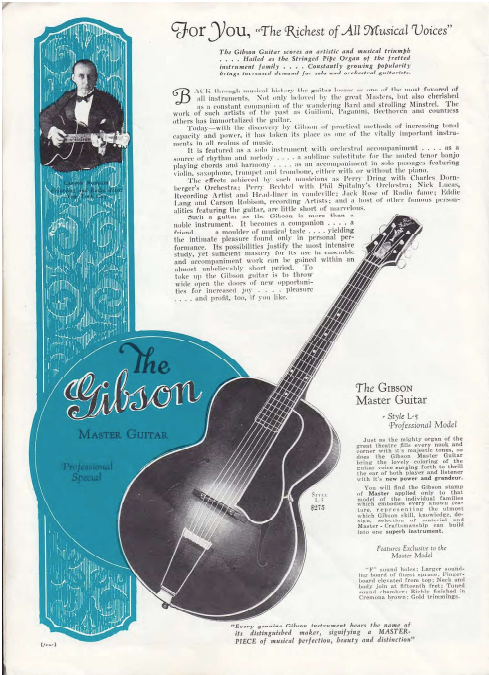
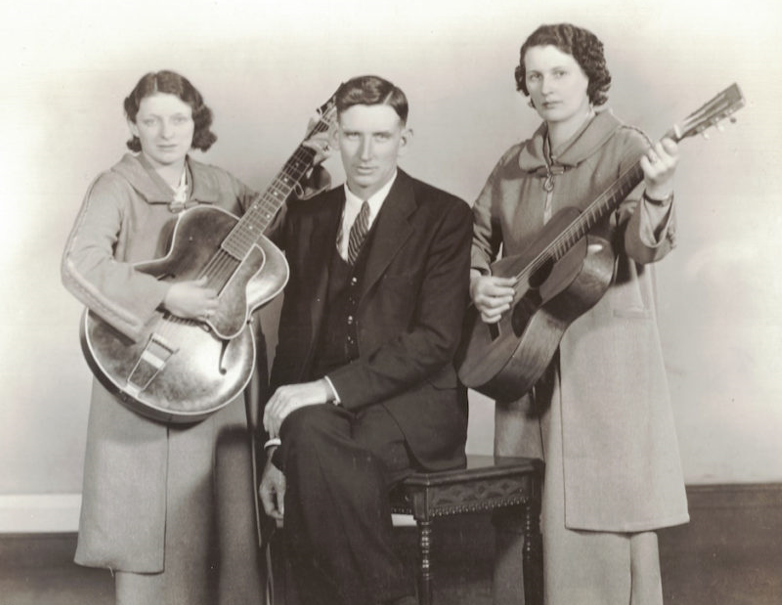
This was an extraordinary purchase for a rural Virginia family in the late 1920s. Introduced in 1923, the L-5 was the very top of the Gibson guitar line and cost $275 ($5,000 in 2023 dollars).
Note the white strip between the crossbars of Maybelle’s tailpiece, something I have never seen on a Gibson archtop. I’ve exchanged emails with early Gibson guitar expert Paul Alcantara, who maintains the superb “Pre-War Gibson L-5 . He believes that it was a label or advertising insert from the music store.

Another unusual feature of Maybelle Carter’s L-5 tells us that it was a custom order. The truss rod cover on the headstock has fancy inlay with Maybelle’s name, misspelled as “Mae Bell Carter.” I had assumed that this was something done later by a local craftsperson, but Paul Alcantara has the inside story on his Web site. It was likely crafted by William C. Schrier, who did similar etchings and engravings for Gibson from 1928 to 1931, working independently from the basement of his home. Examples of his work, including Maybelle’s truss rod cover, can be found here.
A 1928 Gibson L-5 in original condition would be quite valuable today. Working musicians back in the day would be more interested in a guitar’s playing condition than its originality, though, and would replace parts on the guitar from time to time. Maybelle certainly did this. By the 1960s (and perhaps earlier) we can see that the tailpiece had been replaced with a “triple parallelogram” tailpiece (Gibson used these with midrange guitars like the L-7 and ES-175 models), and the tuners had been replaced with Kluson tulip tuners.

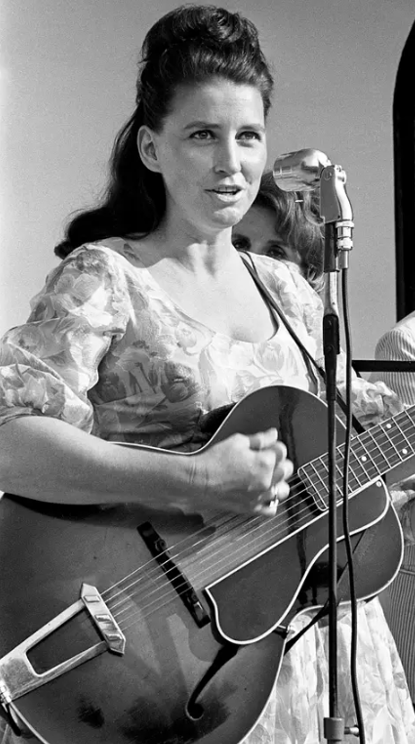
More Carter guitars
The original Carter family – A.P., Sara, and Maybelle – broke up in the early 1940s. Maybelle’s three daughters, Helen, June, and Anita, had sung with the original Carters over the years. Maybelle loved show business, and took her daughters out on the road as “Mother Maybelle and the Carter Sisters,” where they had great success, eventually landing a spot on the Grand Ole Opry in Nashville.
Maybelle’s daughter Anita playing her mother’s 1928 L-5 in 1966, and a picture of the guitar now at the Country Music Hall of Fame. Note the replaced tailpiece and tuners. Source: https://www.tennessean.com/picture-gallery/entertainment/music/2016/06/21/nashville-then-mother-maybelle-highlights-park-concert-in-june-1966/86186754/
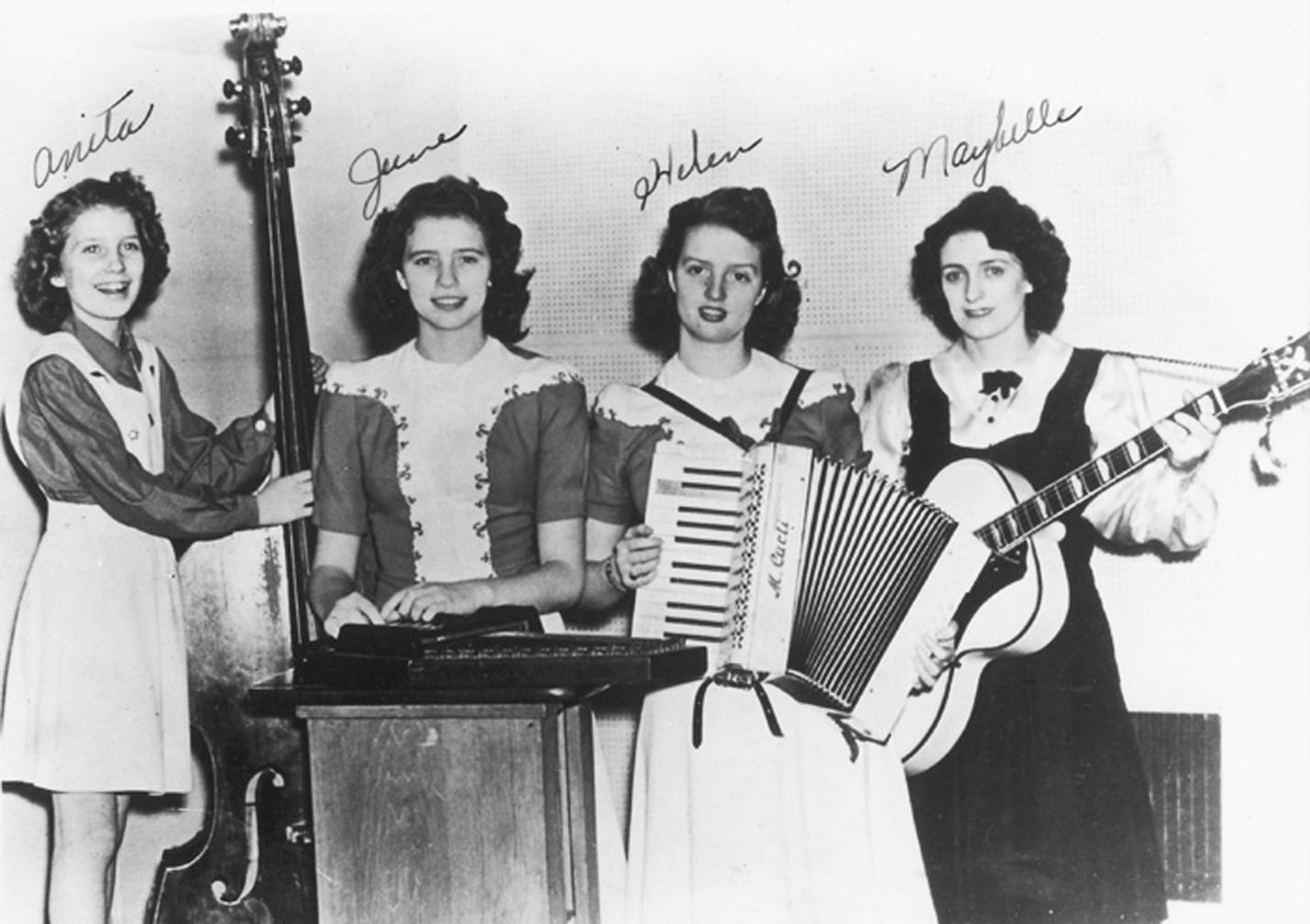
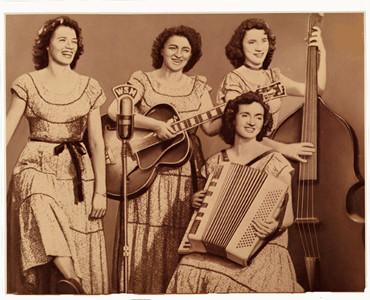
The Rock and Roll Hall of Fame and Museum in Cleveland also has a Maybelle Carter guitar that they date to 1964; If that’s accurate, there were at least three L-5s acquired by the family over the years.
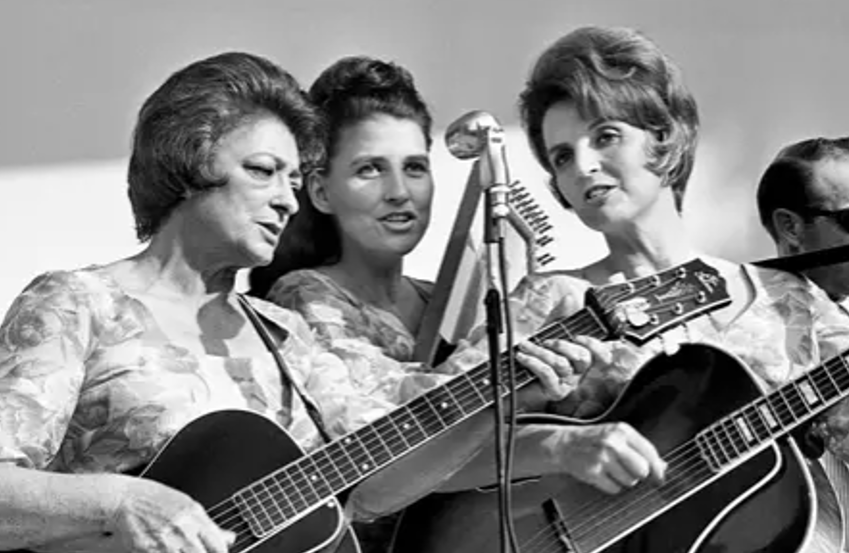
Part two of this blog will be posted next Tuesday, April 9th and is all about Jimmie Rodgers’ Oscar Schmidt Guitar.
Would you like to read more about Maybelle Carter’s 1928 L5? See also:
Instrument Interview: Maybelle Carter’s Guitar – The Birthplace of Country Music
Lamb’s Music Store may have sold famous guitar | Local News | timesnews.net

